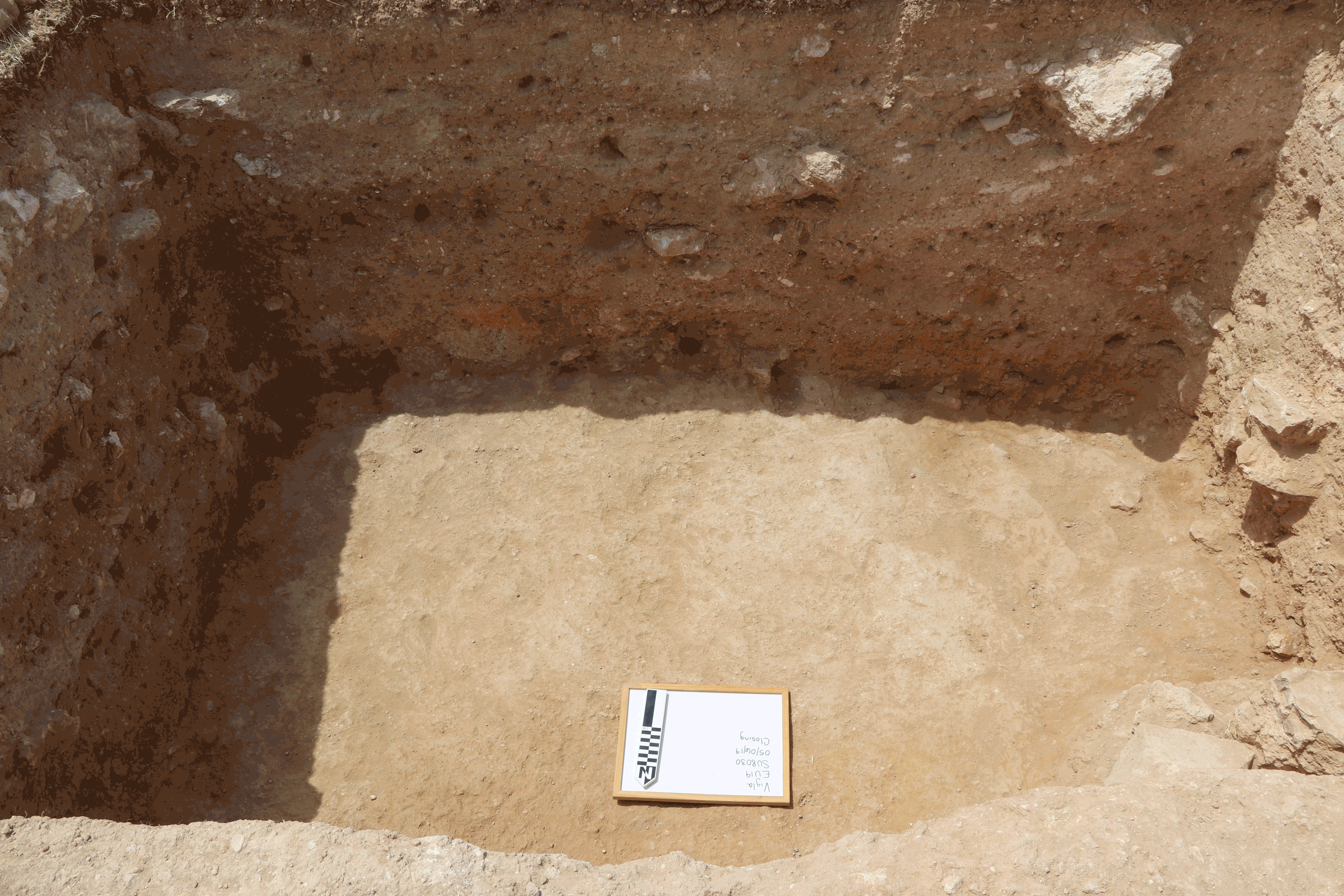
It’s only Wednesday, but it’s been an eventful week. We’ve opened a small new trench adjacent to the south trench, and we’re nearly ready to close that unit, the south trench, and the north trench. In the middle trench, we’re tantalizingly close to reaching the ancient floor level in what we think is a room.
The team reached the bedrock in the south trench at the end of last week. While they were digging, they discovered a large deposit of pottery sitting on bedrock against the base of the wall. However, most of the deposit ran into the east baulk, or vertical face, of the trench. Because the pottery is on a surface at the base of the wall and appears to be placed there at one time, the deposit could help us understand the occupation of Vigla and the dating of the wall.
Brandon decided to open a very small new trench to excavate the deposit. He and the team were able to dig quickly through the upper section of this trench, as the stratigraphy was already well understood from the excavation of the south trench. As of today, we’ve started to remove the pottery and are near to closing out the new trench.

We’re also close to closing the north trench for an entirely different reason. After several sweltering days of working in, as Tom has deemed it, “the mudbrick mines,” Christina, Tom, and Brandon came to the sad conclusion that we were, in fact, digging a pit into the center of the mudbrick wall. We see neither the front or the back of the wall in this trench–only mudbrick everywhere.

This was unexpected, because mudbrick walls really shouldn’t be that wide. The team had already made the decision to focus on a small portion of the trench, and a few staff members will dig down a bit further in a small sounding to see how deep this wall goes and whether it is founded on stone, as the portion of the same wall excavated in 2018 was. When they’ve completed work, we expect to close the trench.
Despite the fact that we were digging into a wall, there were still a lot of interesting pottery finds. Pottery would have been added as temper to the mudbrick themselves during production.


The middle trench is divided into two sections by a wall running north-south. In the east section, we discovered a pit filled with debris. Generally, higher levels in stratigraphy represent later events, but pits are interesting because they represent a later intrusion into earlier, lower levels. Therefore, pits must be excavated separately from the surrounding areas. Today, we finished excavating the pit, which was filled with rubble, broken pottery, and animal bone.

On the west side of the trench, in what may be an interior room, we’re nearing the ancient floor level. As we’re approaching the floor, we must dig slowly and carefully to avoid removing anything resting on the floor. The material resting on the floor will be excavated separately, as it gives us insight into the final phase of use of the space and its abandonment.

